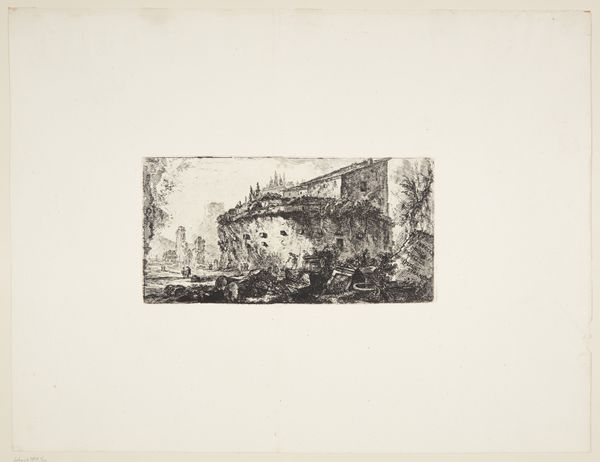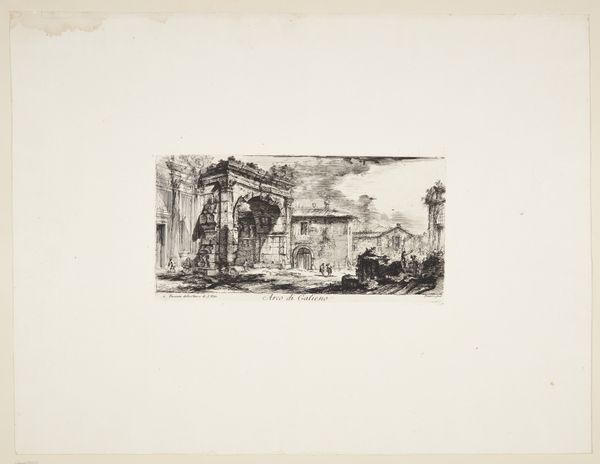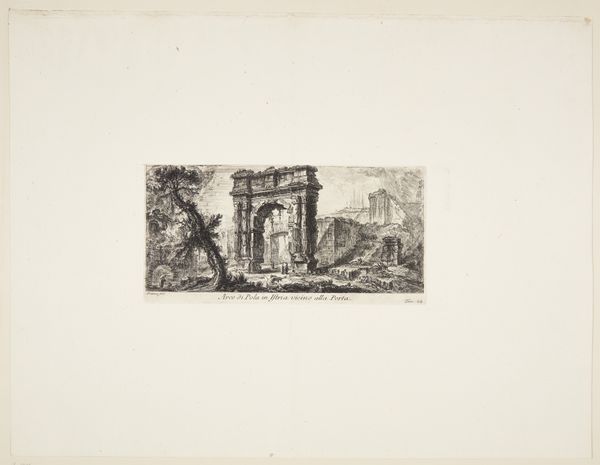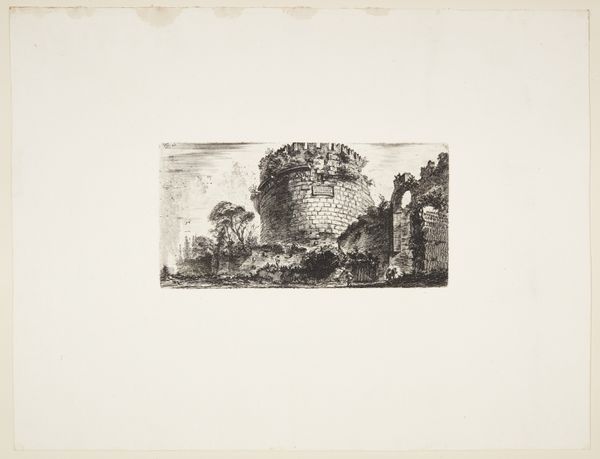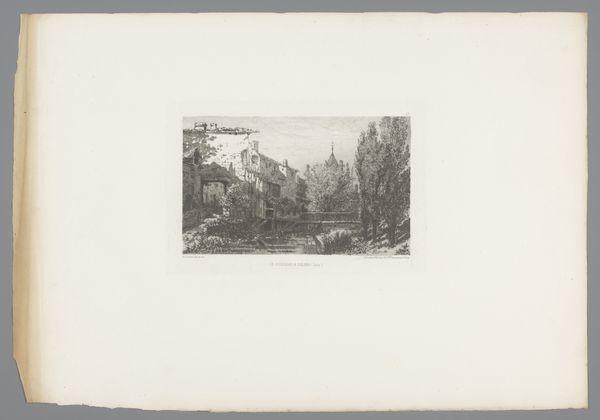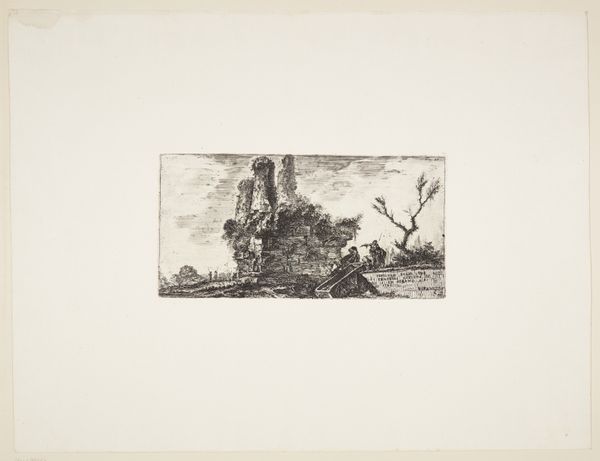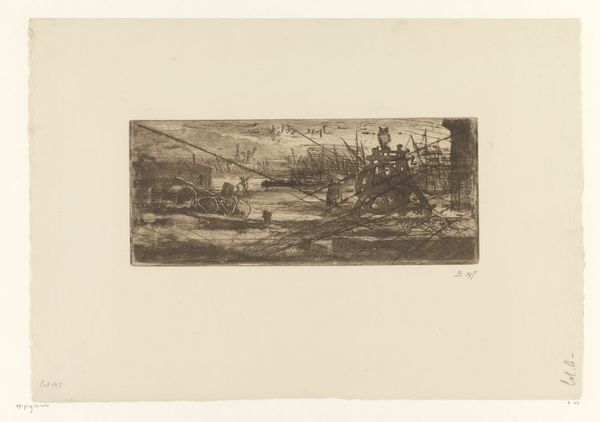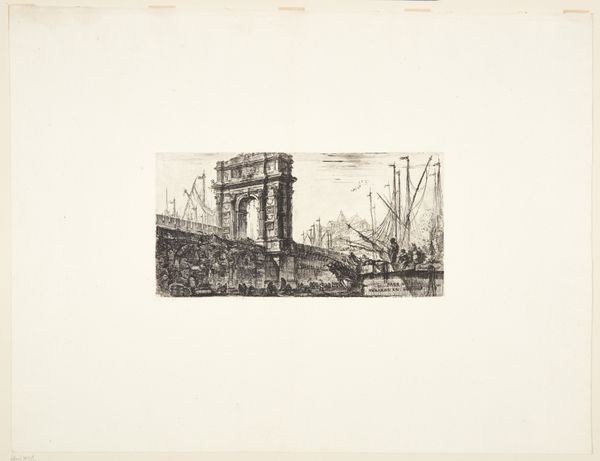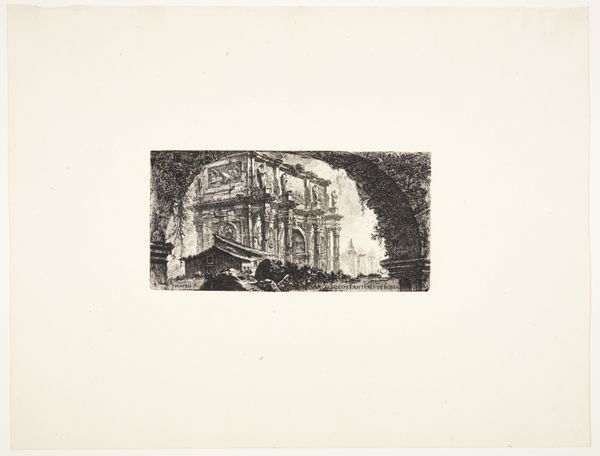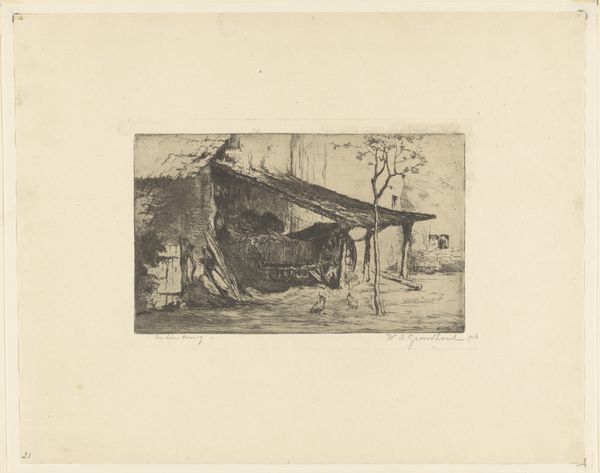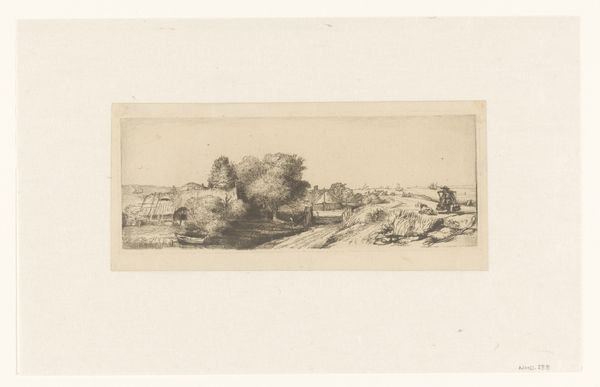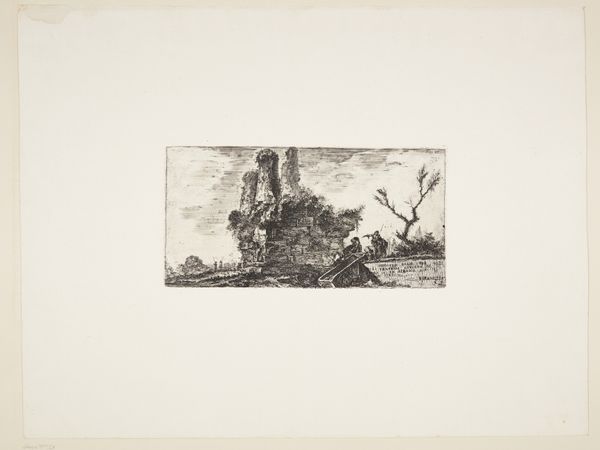![Rear view of the temple of Pola [Pula] in Istria by Giovanni Battista Piranesi](/_next/image?url=https%3A%2F%2Fd2w8kbdekdi1gv.cloudfront.net%2FeyJidWNrZXQiOiAiYXJ0ZXJhLWltYWdlcy1idWNrZXQiLCAia2V5IjogImFydHdvcmtzLzZhZDY1OTJmLWY0NWItNDQ3Mi05M2FlLWY1YjZkYzcwN2JjNi82YWQ2NTkyZi1mNDViLTQ0NzItOTNhZS1mNWI2ZGM3MDdiYzZfZnVsbC5qcGciLCAiZWRpdHMiOiB7InJlc2l6ZSI6IHsid2lkdGgiOiAxOTIwLCAiaGVpZ2h0IjogMTkyMCwgImZpdCI6ICJpbnNpZGUifX19&w=3840&q=75)
Rear view of the temple of Pola [Pula] in Istria 1748
0:00
0:00
print, engraving, architecture
#
baroque
# print
#
landscape
#
cityscape
#
history-painting
#
engraving
#
architecture
Dimensions: 126 mm (height) x 256 mm (width) (plademaal)
Curator: Let’s turn our attention to this engaging print by Giovanni Battista Piranesi. Created in 1748, this engraving is titled "Rear view of the temple of Pola [Pula] in Istria," and offers a fascinating glimpse into the architectural landscape of the time. Editor: There's something ghostly about this, isn't there? It feels like peering into a half-remembered dream of antiquity. The shadows really emphasize this massive building; it dwarfs the tiny figures in the foreground. A poignant perspective of the past and what remains… Curator: Absolutely. Piranesi, known for his dramatic and often romanticized depictions of architecture, wasn’t just documenting buildings. He was actively constructing an idea of the past, framing the ruins within the social and historical context of the 18th century, and commenting on time and decay. The choice to show the rear of the temple rather than its classical façade is deliberate. Editor: That explains it! He captured an image full of evocative decay. It reminds me of how memory itself isn't a pristine recreation, but rather a collage of fragments, eroded by time and filtered through personal experience. The roughness, almost feels romantic, if I can say so. Curator: Indeed, the "roughness" as you call it speaks to Piranesi’s innovative printmaking technique. Through etching and engraving, he creates a depth and tonal range unusual for prints of the era. The play of light and shadow wasn’t merely aesthetic. It carried with it a commentary of lost empires and grandeur diminished. Notice the seemingly incidental figures, included possibly to emphasize scale? Editor: The people really root this grand architectural relic back into human life—almost like time travelers on-site at the back, a little chat near history and architecture itself. It reminds me that even in ruins, places like these were very real, occupied spaces that still felt incredibly sacred. Curator: Precisely! His architectural prints had profound impact on design, aesthetics, and, most importantly, our collective sense of history. His views contributed to both scholarly debates and popular perception. His choices reinforced classical structures and imagery that remain a point of reverence. Editor: Yes, I think looking at Piranesi, what I will hold on is the sense that seeing the ruin could have been a starting point for what was yet to come; a new kind of architecture informed by the beauty and reality of what already existed. A good spot, don’t you think, to just stop, reflect, and simply dream.
Comments
No comments
Be the first to comment and join the conversation on the ultimate creative platform.
